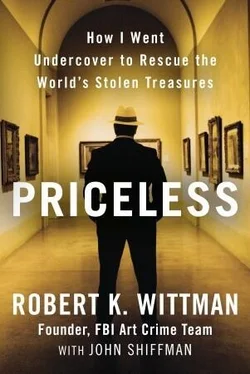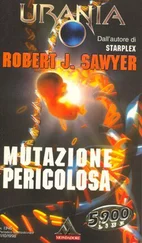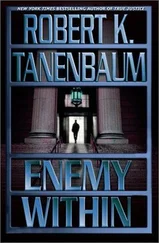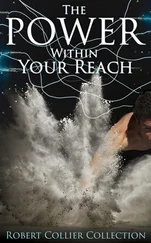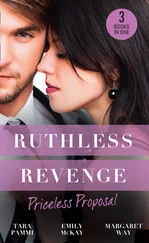In 1923, some six years after Rodin’s death, Mastbaum visited Paris on an extended vacation and became entranced with the French sculptor. He began to buy up bronze castings, plaster studies, drawings, prints, letters, and books, and shipped them home to his beloved Philadelphia. His collection soon included pieces from every period of Rodin’s life. In addition to The Thinker and Mask of the Man with the Broken Nose , Mastbaum brought back The Burghers of Calais, Eternal Springtime , and the complex piece Rodin spent the last thirty-seven years of his life crafting, the enormous sculpture The Gates of Hell . Mastbaum always intended to share his collection with the public, and three years after he began his collection he hired two prominent French neoclassical architects, Paul Cret and Jacques Gréber, to design a building and gardens on a citydonated plot of land on the parkway. In front of the museum courtyard, they erected a facade of the same French château that Rodin had created outside his country estate in his later years. Designed by Jacques Gréber as part of the museum’s overall plan, the Rodin Gardens have remained a calm respite from the clatter of the city, even as the Ben Franklin Parkway landscape morphed over the years.
Mastbaum died unexpectedly in 1926, but his widow finished the project and donated it to the city. The museum opened in 1929 to rave popular and critical reviews. “It is a jewel which shines on the breast of a woman called Philadelphia,” one newspaper gushed. Today, the museum seems small and subtle, especially given its big brother on the hill, the art museum. But its intimate size and wide scope make it unusually accessible. Visitors are encouraged to partake in the lone interactive exhibit—rubbing the nose of the Mask of the Man with the Broken Nose , and wishing for the same kind of good luck the sculpture brought the artist.
In the months that followed the 1988 theft, Bazin and I could have used some of that luck.
With so few clues, we did what any cop does when he comes up empty: We offered a reward. The museum and its insurance company put up $15,000 and we got the local newspapers and television stations to publicize it. The tips flew in, and as always, almost all were wrong. We dug through each one anyway. About a month later, we received a call from a Philadelphia man who knew things about the crime that had not been publicized—like the thief’s flamboyant monologue. He also seemed to know a lot about the man he fingered, Stephen W. Shih. The suspect was twenty-four years old, slightly older than the college student described by the guards, but our informant insisted that he was our man. The rest of the physical appearance seemed to match, and—get this—Shih was working as a $400-a-day stripper to pay the rent. He was unusually handsome. And theatrical!
We figured we had our man, but we needed more than a tip to arrest Shih or search his home. We needed solid evidence, and Bazin moved cautiously. He explained that if we simply confronted Shih and tried to intimidate him into confessing, it might backfire. He might clam up and ditch or destroy the Rodin. This has happened several times in Europe as the police have closed in on thieves. In one infamous case, the mother of a Swiss man suspected of a dozen museum thefts dumped more than one hundred paintings in a lake, destroying not only the evidence but also irreplaceable works of art. Our primary goal, Bazin reminded me, was to recover the sculpture. Our job was to save fragments of history, messages from the past. If, in the process, we busted the bad guy, that would be a bonus.
Bazin came up with a simple plan: Show the guards a photo lineup of Shih and seven guys who looked like him. If the guards ID’d him, we’d have enough to move in. First, we needed a photo of Shih. That was grunt work, and it fell to me. Bazin sent me out with the FBI photographer in the surveillance van. He instructed me to sit on Shih’s house, snap surreptitious pictures, and radio back when I had accomplished my mission.
I learned two painful lessons that week. First: Dress warmly in February in Philadelphia, even if you plan to spend the day inside an undercover van. To maintain cover on stakeout, you have to switch the engine off, and that means no heat. The chief FBI photographer who accompanied me arrived well bundled. After an hour, despite my rookie exuberance, I started shivering like a fool. The photographer’s breath floated through the sub-freezing air as he laughed. My second mistake was leaving my FBI radio on my desk, naively figuring I could use the one in the van dashboard. After a few mind-numbing hours, Shih came out and we got our picture. I flipped on the van radio to make the call, but the radio battery was dead. We drove around the block to the spot where Bazin was waiting for us with another agent, ready to move in if we radioed for backup. I knew he would let me have it for forgetting the handheld radio, and he did.
When we got back to the office, I saw my radio standing upright on his desk. Lesson learned. I’d never again be so casual or make an assumption about an undercover operation.
For comparison’s sake in the photo lineup, the FBI photographer and I set out again to find seven men who looked like Shih. We couldn’t use mug shots; the pictures had to be similar—candids shot from a distance. I figured the task would take a day. Like a lot of things in law enforcement, it took us a lot longer than it should have. To get it right—to find pictures so similar that no judge would ever throw the case out—it took two weeks. When we laid out the photos for the museum guards, each picked Shih. Bazin told me to open my briefcase and start the paperwork.
Because Shih was armed and might have the sculpture stashed in his house, we hoped to confront him elsewhere. We called our tipster back. Did he know when Shih might leave home? As a matter of fact, he said, he did: At 11 a.m. Thursday, the stripper-cum-art-thief would travel to a building at Twelfth and Walnut streets, a teeming downtown corner. It wasn’t ideal—an armed daylight takedown on a busy intersection three blocks from City Hall—but it was the best we had.
It was bitterly cold that March morning, which was fortunate because it made it easy for us to hide our vests and weapons under thick overcoats. Bazin, sitting in one of four undercover cars parked at the lip of the intersection, had “the eye”—he was closest and would give the order to move in. A handful of FBI agents strolled casually down each of the four streets. A dozen city cops were positioned a block away, ready to pounce or block all escape routes. I sat in a parked undercover car half a block away from Bazin, coordinating the radio traffic with a car unit (and a handheld backup radio in the glove box). The agent sitting next to me carried one of the world’s most powerful personal machine guns, an MP5.
Two minutes before eleven, Bazin’s voice came over the radio. “We think we have our suspect. He is not alone. With a female. I’m behind him.” The agent beside me turned the ignition and put the car in drive. Bazin gave the signal, calmly. “All units: Move in. Move in, now.” We lurched forward fifty feet and braked hard in front of Bazin, who already had Shih spread-eagled against the wall. I jumped out awkwardly, constricted by my vest, and held my gun in my best Quantico-style position. Bazin pulled the .25-caliber Raven from Shih’s pocket. He emptied the magazine. One round was missing.
We had Shih, but not the Rodin, and he wouldn’t talk. We searched his room and found an address book with the name of a well-known antiques dealer. The dealer suggested that we talk to Shih’s mother. We did, and she gave us permission to search her place. In the basement, wrapped in newspaper under a tarpaulin hidden beneath a pipe by the water heater, we found The Man with the Broken Nose , undamaged.
Читать дальше
